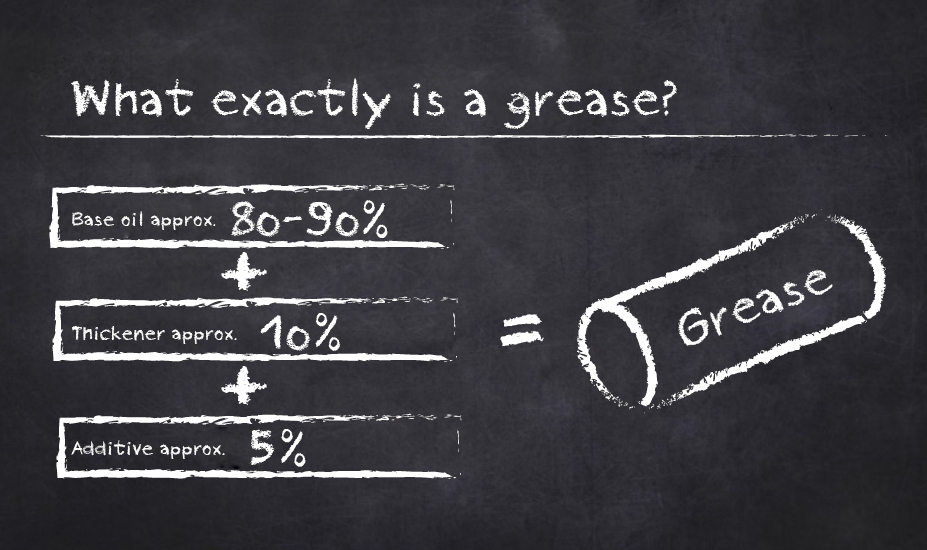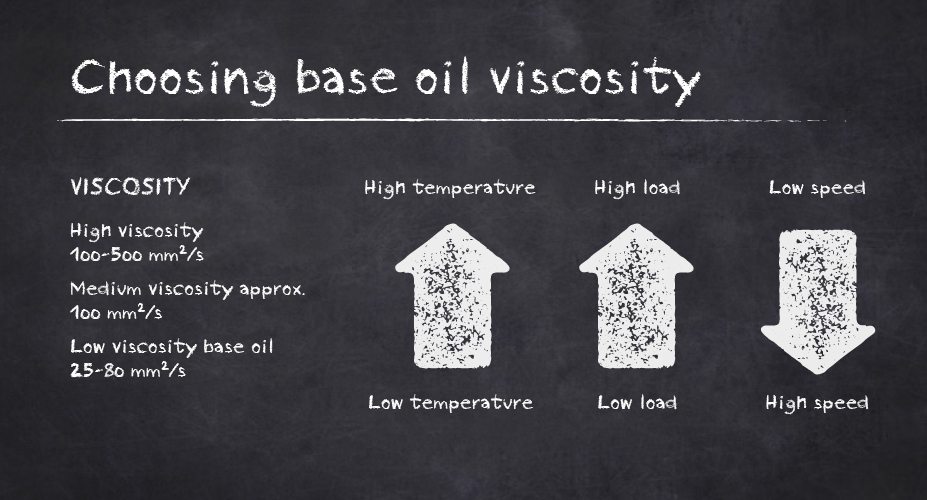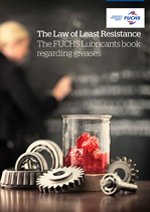Using grease correctly
It is used in all kinds of applications. In everything from bearings and gearboxes to gear wheels and forest machines. It reduces friction, protects against corrosion and seals against water. And of course there’s the unique aspect – the fact that it stays in places where oil would simply run off. We’re talking about lubricating grease, and using it correctly!

ABC OF GREASE
A lubricating grease comprises 80–90% base oil. And of course, the choice of oil affects the grease’s performance. Both mineral and synthetic base oils can be used. The synthetic oils can lend the grease properties that mineral oil can’t, such as a wider temperature range, greater chemical resistance or better electrical properties.
Another main ingredient is thickener, which holds the oil in place. In the industry we sometimes say that the thickener gives the grease body and character, for instance in terms of stability, water resistance, melting point and sealing ability. The third ingredient is the additive, which hones and targets the performance. Additives can increase the grease’s resistance to oxidation, protect against corrosion, reduce friction or counteract seizing up.
STAYS WHERE IT IS
Lubricating grease should provide good lubrication, and reduce friction and abrasion. It should also protect against corrosion. So far, grease and oil are pretty much the same. But grease also has unique properties. It can provide a seal and keep dirt, water and contaminants out of the lubrication point. Grease stays where it is and reduces friction in places where oil would simply run off. This is also why grease is used to lubricate all kinds of different applications, such as ball, roller and slide bearings. Gearboxes and open gear wheels are other common applications. Nowadays lubricating grease is also increasingly used in forest machines for central lubrication of the chain and cutting bar.

GREASE OR OIL?
So there are advantages to using lubricating grease instead of oil. Because of its consistency, grease stays put in the lubrication point. It has sealing properties, offers good corrosion protection and can withstand heavy loads. But it does have limitations. Unlike oil, grease cannot conduct heat away, like in an engine which needs cooling. Nor can lubricating grease be filtered to increase its purity. It’s also difficult to separate water from grease.
CHOOSE THE RIGHT GREASE
Each application places particular demands on the lubricating grease. When choosing a product, it is important to consider everything from water, dirt and chemicals to temperature, rpm and load. Just as with lubricating oils, the viscosity of the base oil is important. Low viscosity base oils tend to work better at low temperatures, while lubricating grease with high base-oil viscosity is used with higher loads and temperatures. Also consider the speed/revs per minute in the application. Low speeds call for a high viscosity base oil, while low viscosity base oils are better in fast-moving applications.

BLEND WISELY
When a new grease is being used in an application, it is important to know whether the new grease and the old one can be mixed. The best thing that can happen is of course nothing, as that means the greases are miscible. The grease mix may however harden, and this can have devastating consequences for a centralised lubrication system. On the other hand, the grease mix could soften, which can cause leakage and bearing failure. One tip is always to talk to your lubricant supplier, who can carry out miscibility tests ahead of a product switch.
WARNING – OVER-LUBRICATION!
It is important to use the right amount of grease, and to lubricate with the right frequency. More is not always better, and overdosing the grease can be a costly business. Over-lubrication of bearings can lead to higher temperature and oxidation of the grease, which breaks down and ages far more quickly. This can lead to increased wear and eventually bearing failure. Seals can also be damaged if bearings are over-lubricated. Too high a pressure from the grease gun when lubricating bearings can damage the seal. This could enable water and contaminants to get into the bearing, leading to wear and corrosion.

To prevent this happening, be sure to review all lubrication points and draw up a maintenance schedule. The schedule will specify the right amount of lubricating grease and re-lubricating intervals. Our application engineers can help you with your lubrication schedule, and can also recommend the most suitable product to optimise performance and reduce maintenance costs.
Niels Højer
This might also interest you?

Tips to secure your lubrication maintenance
Here are a few tips that help you keep good order in your lubrication maintenance. They reduce the risk of operational disruptions and unplanned stoppages and is a key component of Preventive Maintenance.

Higher productivity and profitability in four stages
There are shortcuts to higher productivity and profitability. One of them is a Plant Survey – a systematic lubrication review focusing on potential savings and efficiencies – without the need for any new investment.
All blog posts
Download our handbook
The FUCHS Lubricants book regarding greases.
Subscribe
Only available in Danish.
Smart Lubrication
Smart Lubrication is a blog from FUCHS where we share our common knowledge about lubricants and lubrication.
